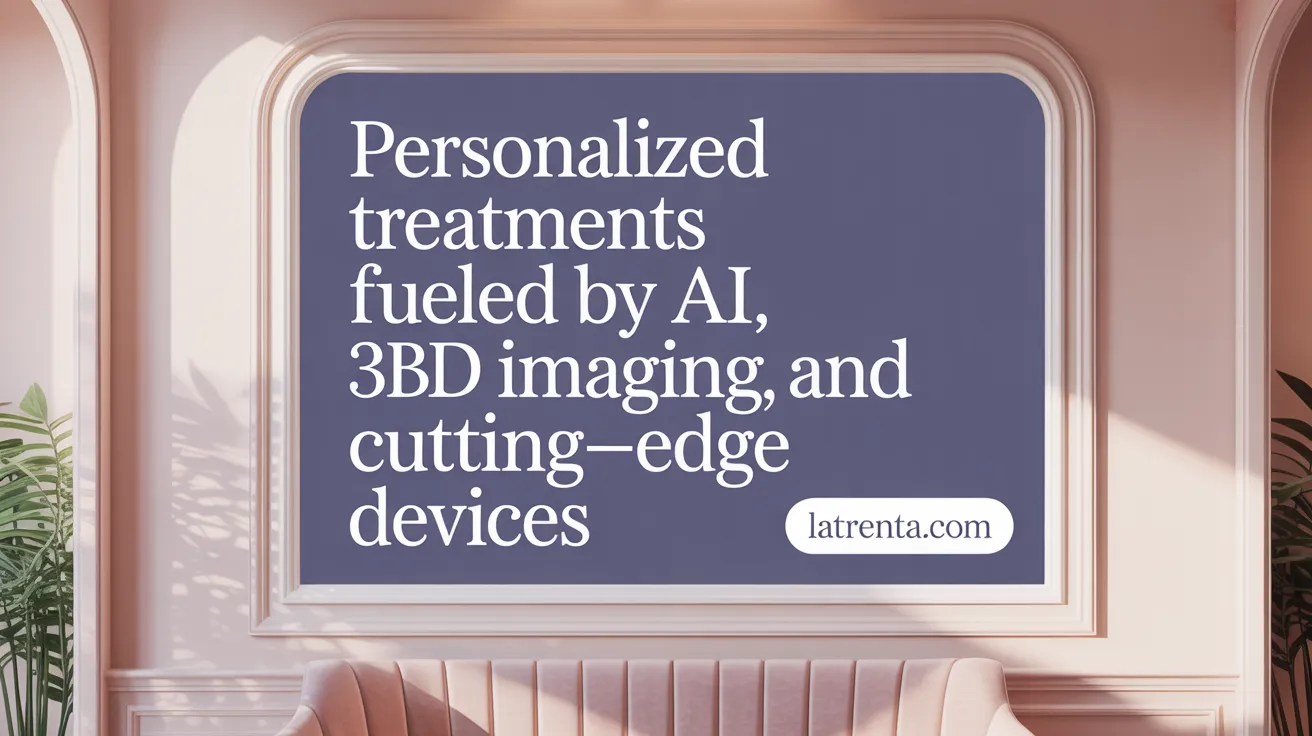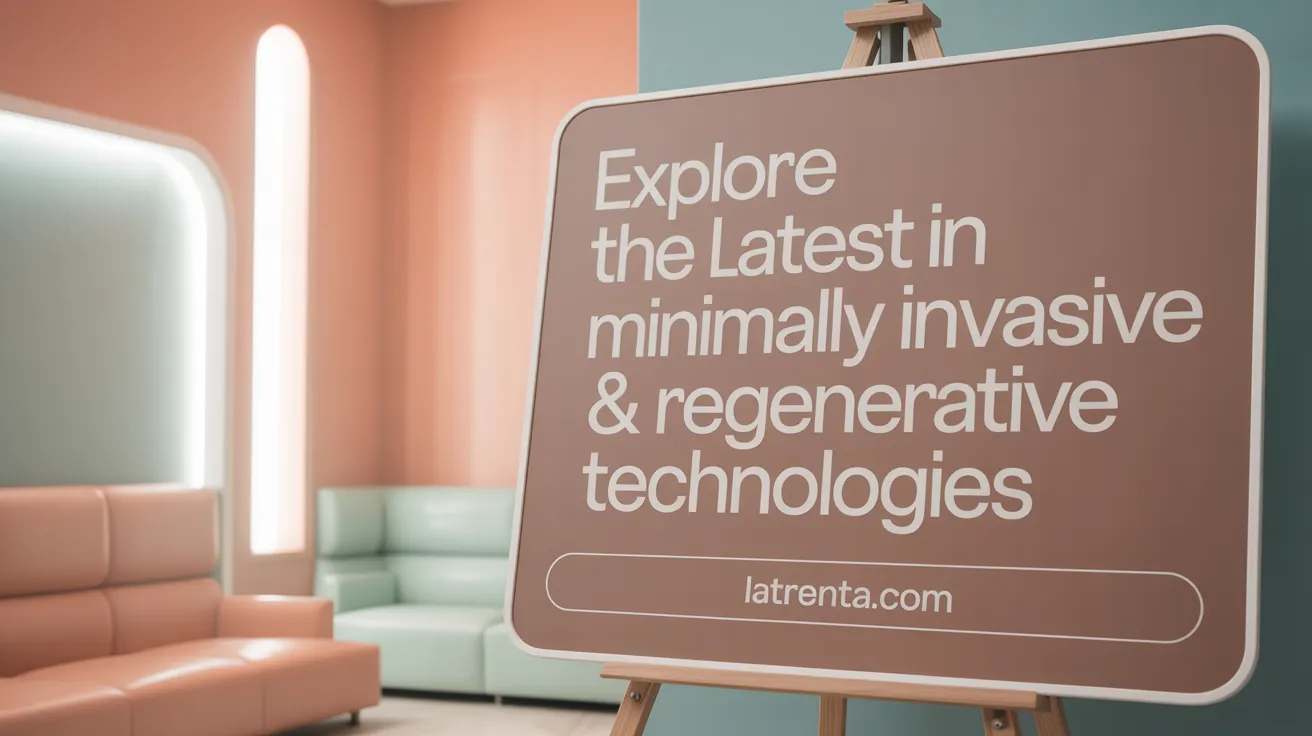Embracing Innovation in Facial Rejuvenation
As aesthetic medicine rapidly evolves, advanced facial refinement and rejuvenation techniques are reshaping how we combat the signs of aging. Combining surgical precision with non-invasive innovations, today's strategies deliver natural, long-lasting results personalized to individual anatomy and lifestyle. This article explores the latest surgical and minimally invasive methods, holistic approaches to pan-facial rejuvenation, safety guidelines, and groundbreaking technologies propelling the future of facial enhancement.
Latest Advancements and Innovations in Facial Rejuvenation
What are the latest advancements and innovations in facial rejuvenation techniques?
Recent progress in facial rejuvenation mixes the latest in both surgical and non-surgical methods, focusing strongly on customized, minimally invasive, and natural-looking outcomes. New technologies have transformed treatment options, making procedures more effective and safer.
Laser technology has seen notable improvements with devices like HALO Pro, MOXI, and SofWave. These laser systems stimulate collagen, improve skin tone, and reduce signs of aging without significant downtime. Similarly, injectable treatments have advanced, with longer-lasting dermal fillers and refined Botox techniques such as Micro-Botox and Baby Botox, offering subtle and natural enhancements.
Combination therapies are gaining popularity as they deliver synergistic benefits. Treatments now often include blends of laser, injectables, platelet-rich plasma (PRP), and radiofrequency (RF) microneedling to optimize skin quality and facial volume.
Innovations include the integration of AI-assisted facial mapping and 3D printing technologies. AI helps personalize treatments by analyzing facial anatomy and predicting outcomes more accurately. 3D printing allows the creation of customized implants and prosthetics, improving aesthetic fitting and projection.
A notable trend is a shift toward subtle, natural results rather than dramatic changes. Many patients prefer minimal, harmonious enhancements that respect their original features.
In addition, developments in minimally invasive surgeries such as mini facelifts, neck lifts, and facial implants are expanding options for those seeking long-term rejuvenation with less recovery time.
Overall, these innovations reflect a move toward safer, more precise, and personalized facial rejuvenation solutions. As research continues, future advancements look promising, promising even more effective and minimally invasive options for maintaining youthful skin and facial harmony.
Minimally Invasive and Non-Surgical Facial Rejuvenation Modalities
What minimally invasive and non-surgical facial rejuvenation procedures are currently available?
Today’s advanced aesthetic landscape offers numerous options that provide effective skin rejuvenation without requiring extensive surgery. These procedures are popular for their convenience, minimal recovery time, and ability to achieve natural-looking results.
Injectable treatments are among the most common non-surgical options. Botulinum toxin, known by brand names like Botox and Dysport, works by temporarily paralyzing facial muscles that cause dynamic wrinkles. Results typically last three to six months and help smooth out forehead lines, crow’s feet, and frown lines.
Dermal fillers are used to restore lost facial volume and improve contour. Hyaluronic acid-based fillers such as Juvederm and Restylane are most popular given their compatibility and biological presence. Other options include Radiesse, calcium hydroxyapatite, and poly-L-lactic acid (PLLA). These can volumize cheeks, lips, and under the eyes, with effects lasting from several months to over a year.
Laser therapies have revolutionized skin texture and tone improvement. Treatments like HALO, Pico, and SofWave use different laser wavelengths for skin resurfacing, reducing discoloration, fine lines, and sun damage. They stimulate collagen production and can be performed with minimal downtime.
Ultrasound and radiofrequency technologies are also widely used. Devices such as Thermage, EndyMed 3Deep, and Morpheus8 utilize energy to heat deep skin layers, inducing collagen remodeling and tightening skin.
Microneedling combined with Platelet-Rich Plasma (PRP) and chemical peels further enhance skin quality by exfoliating damaged cells and stimulating natural collagen synthesis. Newer devices like EMFACE, which combine High-Intensity Focused Electromagnetic (HIFEM) muscle contractions with RF heating, improve facial contour, skin firmness, and tone.
Benefits of minimal downtime and natural outcomes
These non-invasive approaches are favored for their quick recovery periods, often just a few days or less. Most patients experience little to no visible swelling or bruising, making it easier to incorporate treatments into busy schedules.
Furthermore, the results tend to be subtle and natural, especially when treatments are tailored to individual skin needs. Combining multiple modalities, such as Botox with laser resurfacing or fillers with microneedling, maximizes aesthetic benefits while maintaining a realistic appearance.
As technology advances, these treatments continue to evolve, offering more effective, longer-lasting results that enhance facial harmony and slow the signs of aging with minimal disruption.
| Treatment Method | Primary Purpose | Typical Duration of Effects | Notable Advantages |
|---|---|---|---|
| Botulinum Toxin | Wrinkle reduction, muscle relaxation | 3-6 months | Quick, effective, reversible |
| Dermal Fillers | Volume restoration, contour shaping | 6 months to 2 years | Immediate results, customizable |
| Laser Skin Resurfacing | Skin texture, tone, discoloration | Varies, several months | Collagen stimulation, high precision |
| Ultrasound/RF Devices | Skin tightening, collagen remodeling | 1-2 years | Non-invasive, long-lasting effects |
| Microneedling & Peels | Skin rejuvenation, scar reduction | Several months | Minimal downtime, safe for all skin types |
Exploring these options allows for personalized facial rejuvenation plans that suit individual skin conditions and aesthetic goals, paving the way for natural and lasting improvements.
Customized Surgical Facelift Techniques: SMAS, Deep Plane, and Preservation Deep Plane

What surgical techniques are commonly used for customized facelift procedures?
To achieve personalized facial rejuvenation, surgeons utilize various facelift techniques, each targeting specific layers of facial tissue for optimal results. The most common methods include the SMAS (Superficial Musculoaponeurotic System) facelift, deep plane facelift, and preservation deep plane facelift.
The SMAS facelift works primarily on the superficial muscular layer, tightening this tissue to lift and support the face. This technique provides natural-looking results with minimal invasiveness and is suitable for patients with mild to moderate aging signs.
The deep plane facelift involves releasing and repositioning deeper facial structures, including muscles and ligaments. This approach offers a more comprehensive lift, restoring natural volume and contour, with results lasting 10-15 years or more.
The preservation deep plane facelift focuses on lifting the deeper tissues while preserving important blood vessels, ligaments, and connective tissue. This minimizes trauma, reduces swelling, and speeds up recovery, producing long-lasting and natural outcomes.
Choosing the right technique depends on individual facial anatomy, the extent of aging, and patient-specific goals. Surgeons tailor each plan to ensure results look natural while offering durability.
Targeting different facial layers for natural results
Each facelift approach targets specific layers of facial tissue. The SMAS technique concentrates on the superficial muscle layer, providing a subtle lift suited to early aging stages.
Deep plane lifts work beneath the superficial layer, addressing deeper structural issues that cause sagging and loss of youthful contour.
Preservation deep plane methods aim to lift deep tissues while maintaining blood flow and support structures, maximizing natural appearance and reducing side effects.
Longevity and outcomes of each facelift method
The SMAS facelift offers results typically lasting around 7-10 years and is ideal for patients with mild to moderate aging.
Deep plane lifts can maintain their effects for 10-15 years or longer, making them suitable for more advanced aging cases.
Preservation deep plane procedures also provide long-lasting results comparable to deep plane lifts but with added benefits of reduced recovery time and minimized trauma.
Patient-tailored surgical plans based on anatomy and aging stage
Effective facelift surgery requires a thorough assessment of each patient's facial structure and the specific pattern of aging.
Surgeons evaluate skin elasticity, bone structure, fat distribution, and ligament integrity to determine the most suitable technique.
Personalized plans may combine methods or adapt techniques based on individual needs, aiming for natural, harmonious, and durable results.
| Technique | Targeted Depth | Typical Longevity | Suitable For | Additional Benefits |
|---|---|---|---|---|
| SMAS facelift | Superficial muscular layer | 7-10 years | Mild to moderate aging | Less invasive, natural outcomes |
| Deep plane facelift | Deep facial structures | 10-15+ years | Moderate to severe aging | Comprehensive correction, long-lasting |
| Preservation deep plane | Deeper tissues with preservation | 10-15+ years | Patients needing quicker recovery | Reduced trauma, faster healing, natural look |
Tailoring these surgical options to each patient enhances the potential for natural, enduring facial rejuvenation, emphasizing both functional and aesthetic outcomes.
Comprehensive Pan-Facial Rejuvenation: A Holistic Approach

How do holistic and comprehensive approaches enhance pan-facial rejuvenation outcomes?
Holistic and comprehensive treatment strategies play a vital role in elevating the results of facial rejuvenation. Instead of focusing on isolated areas or techniques, these approaches consider the face as an interconnected system involving skin, muscles, fat, and underlying bone.
By addressing multiple aspects of aging simultaneously—such as volume loss, skin laxity, and structural changes—practitioners can craft customized plans that restore natural harmony. Combining treatments like surgical lifts, fat grafting, laser resurfacing, microneedling, and dermal fillers in one session allows for more balanced and cohesive outcomes.
One major advantage of this method is the ability to tailor interventions to the individual’s unique facial features and aging pattern. This personalizes the results, ensuring they look natural and preserve or enhance the patient’s proportions.
Furthermore, a one-session comprehensive approach reduces overall recovery time and minimizes the need for multiple procedures over months or years. It also decreases the risk of discrepancies or uneven results that can happen when treatments are performed separately.
Practitioners emphasize fuelling facial rejuvenation with structural foundations—thanks to deep lifts and volumizing techniques—that last longer and look more authentic. By holistically restoring features, patients achieve a refreshed, youthful appearance that harmonizes every facet of their face, creating a subtle, natural vibrancy.
In conclusion, holistic pan-facial rejuvenation integrates multiple surgical and nonsurgical methods, focusing on the entire face’s anatomy and aging connections. This strategy ensures more effective, durable, and natural outcomes, aligning with the patient’s aesthetic goals and promoting overall facial balance.
Safety and Anatomical Principles in Advanced Facial Rejuvenation

Why is detailed understanding of facial anatomy crucial for safety?
Performing advanced facial rejuvenation procedures, whether surgical or non-surgical, depends heavily on comprehensive knowledge of facial anatomy. This includes recognizing the layers beneath the skin, such as fat compartments, fascia, muscles, blood vessels, and nerves. Precise anatomical awareness helps prevent serious complications, like nerve injuries or vascular occlusions, which can lead to pain, tissue necrosis, or functional deficits.
What are the main safety considerations and guidelines?
A key safety measure involves identifying and avoiding vital structures during treatment. For example, understanding the pathways of arteries such as the supratrochlear, supraorbital, and superficial temporal arteries helps guide safe injection sites. In the upper face, these arteries have multiple interconnected pathways, so avoiding vascular penetration minimizes the risk of hematoma or embolism.
How important are injection planes and landmarks?
Choosing the correct injection plane is critical. For many rejuvenation techniques, the ideal target is the deep supraperiosteal layer, especially in the forehead and temporal regions. This approach reduces the risk of damaging superficial vessels and nerves. Landmark identification—such as bony prominences and ligament attachments—is essential for accurate and safe placement.
What roles do the SMAS and facial ligaments play?
The Superficial Musculoaponeurotic System (SMAS) layer is a significant focus in both surgical and minimally invasive procedures. Knowledge of its anatomy allows for effective tissue repositioning and lifting. Similarly, facial ligaments serve as anchor points; understanding their locations enhances the efficacy and safety of thread lifts and other procedures.
How does individual assessment improve safety?
Every patient’s anatomy is unique. An individualized assessment, including facial analysis and possibly imaging, helps tailor treatment plans that respect anatomical variations. This personalized approach reduces risks and achieves natural results.
Summing up safe practice essentials
In all advanced facial rejuvenation work, the foundation remains a thorough understanding of facial anatomy, careful identification of landmarks, and precise targeting of treatment planes. Combining this with personalized patient evaluations ensures safety and allows clinicians to deliver outcomes that are both effective and harmonious.
Innovations in Protocols and Treatment Planning for Facial Enhancement
 Recent advancements in facial rejuvenation therapy revolve around leveraging cutting-edge technology to enhance precision, safety, and outcomes. AI-assisted procedures and 3D imaging are transforming how practitioners plan and customize treatments. These tools allow for detailed morphing simulations, precise facial measurements, and personalized treatment mapping, ensuring interventions align with individual anatomy and aesthetic goals.
Recent advancements in facial rejuvenation therapy revolve around leveraging cutting-edge technology to enhance precision, safety, and outcomes. AI-assisted procedures and 3D imaging are transforming how practitioners plan and customize treatments. These tools allow for detailed morphing simulations, precise facial measurements, and personalized treatment mapping, ensuring interventions align with individual anatomy and aesthetic goals.
Minimally invasive techniques have gained popularity due to their safety profile and reduced downtime. Ultrasound-based therapies like Ultherapy, radiofrequency treatments, and thread lifts now incorporate energy-based devices to stimulate collagen and tighten skin. These methods achieve natural-looking results without extensive surgery. Technological innovations like laser-assisted microliposuction and ultrasonic rhinoplasty further minimize tissue trauma while improving aesthetic results.
Emerging therapies focused on regeneration include stem cell applications and bioprinting. Stem cell therapies aim to rejuvenate skin and underlying tissues; bioprinting enables the creation of custom implants and skin grafts tailored to the patient’s unique facial anatomy. These approaches promise longer-lasting and personalized outcomes.
Patient engagement and treatment precision are enhanced through virtual simulations. Digital models enable patients to preview expected results, fostering clearer communication and setting realistic expectations. This streamlines consultations and reduces retreatments.
Overall, these innovations merge safety, personalization, and effectiveness. By integrating AI, 3D technology, minimally invasive energy therapies, and regenerative medicine, facial enhancement continues to evolve into a more precise, targeted, and patient-centered field.
Scientific Review of Cutting-Edge Facial Rejuvenation Treatments

What are the latest minimally invasive facial rejuvenation methods?
Recent advances focus on procedures that offer effective results with minimal downtime. These include botulinum toxin injections, like Botox, which temporarily relaxes facial muscles to reduce wrinkles. Dermal fillers such as hyaluronic acid and calcium hydroxyapatite are used to restore volume in key areas like cheeks, lips, and under the eyes, delivering immediate aesthetic improvements.
Laser skin resurfacing remains a mainstay for improving skin texture and tone by removing damaged outer layers. Energy-based devices like radiofrequency (RF) and ultrasound therapies, including Ultherapy, stimulate collagen production deep within the skin, resulting in natural tightening and rejuvenation.
How do energy-based technologies promote skin regeneration?
Energy-based treatments are designed to induce controlled thermal injury to the dermis, which activates the body's healing response. This leads to increased collagen and elastin synthesis, essential proteins that maintain skin firmness and elasticity. Technologies like laser resurfacing target sun damage, age spots, and uneven pigmentation. RF and ultrasound devices create a gradual lifting effect, enhancing facial contours without surgery.
What regenerative treatments are gaining popularity?
Platelet-Rich Plasma (PRP) therapy, often called the "vampire facial," uses concentrated platelets from the patient’s own blood to promote tissue healing and collagen growth. PDRN (Polydeoxyribonucleotides) and exosome therapies are emerging as innovative options to boost skin regeneration and repair.
Stem cell therapy and nanotechnology-based approaches are now under research, aiming to deliver regenerative cells or molecular signals directly into the skin. These methods promise longer-lasting and more natural results.
How are multiple modalities combined for better outcomes?
Combining treatments such as microneedling with PRP, chemical peels, and laser therapy can enhance overall skin appearance by addressing multiple aspects of aging simultaneously. For example, microneedling creates microchannels that facilitate absorption of growth factors and serums, amplifying collagen production. Tailoring these combinations based on individual skin needs optimizes benefits while minimizing risks.
What does the future hold for facial rejuvenation?
Advancements in gene editing, cellular therapies, and bioengineering are poised to revolutionize the aesthetic field. Precision medicine tools like AI-assisted facial mapping enable customized treatment plans that consider genetic and environmental factors.
Emerging techniques involve nanotechnology, which allows for targeted delivery of therapeutic agents, and 3D bioprinting for creating personalized implants and tissues. Stem cell therapies hold potential for permanent regeneration and holistic rejuvenation.
In summary, the future of facial aesthetic medicine lies in combining minimally invasive procedures with regenerative science to achieve subtle, natural-looking, and durable results. Personalized protocols using sophisticated technology are set to define the next era of facial rejuvenation.
Combination Therapies and Synergistic Treatment Strategies
How can integrating different skin rejuvenation techniques optimize results?
Combining various treatments like injectables, laser therapy, PRP, and RF microneedling allows practitioners to address multiple signs of aging simultaneously. For example, Botox can relax dynamic wrinkles, while dermal fillers restore lost volume. Laser treatments can improve skin texture and discoloration, and PRP encourages tissue regeneration. When these procedures are used together, they offer a comprehensive approach that enhances overall skin quality.
Why are multimodal approaches beneficial for achieving superior aesthetic outcomes?
Using multiple modalities leverages their individual strengths, resulting in more natural, longer-lasting, and visible improvements. For instance, pairing laser skin resurfacing with collagen-stimulating treatments like RF microneedling boosts skin firmness and reduces fine lines more effectively than any single procedure alone.
How do customization and individual skin assessment influence treatment plans?
Every patient's skin responds differently based on skin type, aging patterns, and personal goals. Thorough evaluation helps specialists tailor combinations of procedures—for example, using superficial peels for sensitive skin or deeper laser treatments for more advanced photoaging ensures safety and maximizes benefits.
What strategies are employed to optimize recovery and maintain natural results?
Practitioners often sequence treatments carefully and choose minimally invasive options to reduce downtime. Using advanced technologies like no-downtime lasers or gentle microneedling techniques promotes healing, while multi-session plans help achieve gradual, natural-looking improvements that align with each patient’s natural features.
| Treatment Type | Benefits | Ideal Candidates | Additional Notes |
|---|---|---|---|
| Injectables (Botox, Fillers) | Reduce wrinkles, restore volume | Early aging, volume loss, fine lines | Quick results, minimally invasive |
| Laser Therapy | Improve skin tone, texture, spots | Sun damage, uneven skin | Multiple sessions, customizable depth |
| PRP (Platelet-Rich Plasma) | Stimulate tissue regeneration | Skin aging, scars | Enhances healing, natural approach |
| RF Microneedling | Stimulate collagen, tighten skin | Fine lines, skin laxity | Often combined with PRP for enhanced results |
Upcoming trends emphasize personalized, combined, minimally invasive treatments with a focus on natural and long-lasting effects, maximizing safety and patient satisfaction.
Future Directions and Emerging Technologies in Facial Refinement
How might gene editing and regenerative medicine applications influence facial rejuvenation?
Advances in gene editing, such as CRISPR technology, hold promise for addressing underlying aging processes at the cellular level. These techniques could potentially correct genetic predispositions to skin laxity, fine lines, and loss of collagen, leading to more natural and long-lasting rejuvenation effects. Regenerative medicine, focusing on stimulating tissue repair and regeneration, is being explored to enhance skin tone, texture, and elasticity, potentially reversing some effects of aging without invasive procedures.
What role does bioprinting play in future facial aesthetic treatments?
Bioprinting involves creating living tissues and customized implants through 3D printing technologies. This innovative approach can produce personalized facial implants and grafts that perfectly match individual anatomy, resulting in improved aesthetic outcomes. Furthermore, bioprinting could lead to the development of tissue-engineered skin grafts and facial structures, reducing dependency on traditional alloplastic materials and enhancing healing.
Can stem cell therapy improve skin rejuvenation?
Stem cell therapies are emerging as a powerful tool for skin regeneration. By harnessing the body's own regenerative capabilities, these treatments can stimulate new collagen growth, improve skin texture, and reduce signs of aging. These therapies may be used alone or combined with other resurfacing techniques to enhance overall skin quality, with minimal downtime and natural results.
How is AI transforming facial rejuvenation procedures?
Artificial Intelligence (AI) is increasingly used for facial mapping and virtual planning. AI-driven technology allows practitioners to analyze facial structures with high precision, predict aging patterns, and customize treatment plans tailored to individual needs. This personalization ensures more natural outcomes and helps in setting realistic expectations, making procedures safer and more effective.
What are some exciting minimally invasive innovations shaping the future?
Less invasive options like microliposuction and devices such as EMFACE are gaining popularity. Microliposuction offers precise fat removal with minimal recovery time, while EMFACE utilizes radiofrequency technology combined with muscle stimulation to tighten skin and improve facial contours without surgery. These innovations provide effective, subtle enhancements suitable for early aging signs, and demand shorter healing periods, making facial rejuvenation more accessible and less daunting for patients.
The Path Forward in Facial Rejuvenation
Advancements in facial refinement and rejuvenation continue to transform aesthetic care, blending surgical expertise with minimally invasive and regenerative technologies. Personalized, holistic approaches emphasizing safety and natural appearance are redefining patient outcomes. Innovations such as AI-assisted planning, bioprinting, and gene editing promise to further elevate precision and durability. As science and artistry converge, the future of facial rejuvenation holds immense potential to restore youthful vitality with unparalleled customization and minimal downtime, empowering patients to embrace their unique beauty confidently.
References
- Skin resurfacing techniques as a tool for facial rejuvenation
- Advanced Facial Rejuvenation Techniques - Vigam Medical Spa
- Latest Trends in Non-Surgical Facial Rejuvenation
- Types of Facelifts | SMAS vs Deep Plane vs Preservation
- Application of Nonsurgical Modalities in Improving Facial ...
- Mastering Pan Facial Rejuvenation Techniques
- Emerging Technologies and Trends in Facial Rejuvenation
- Advanced Rejuvenation Techniques: Unlocking Youthful ...
- The Latest Trends in Non-Surgical Facial Rejuvenation
- Latest Trends in Non-Surgical Facial Rejuvenation
